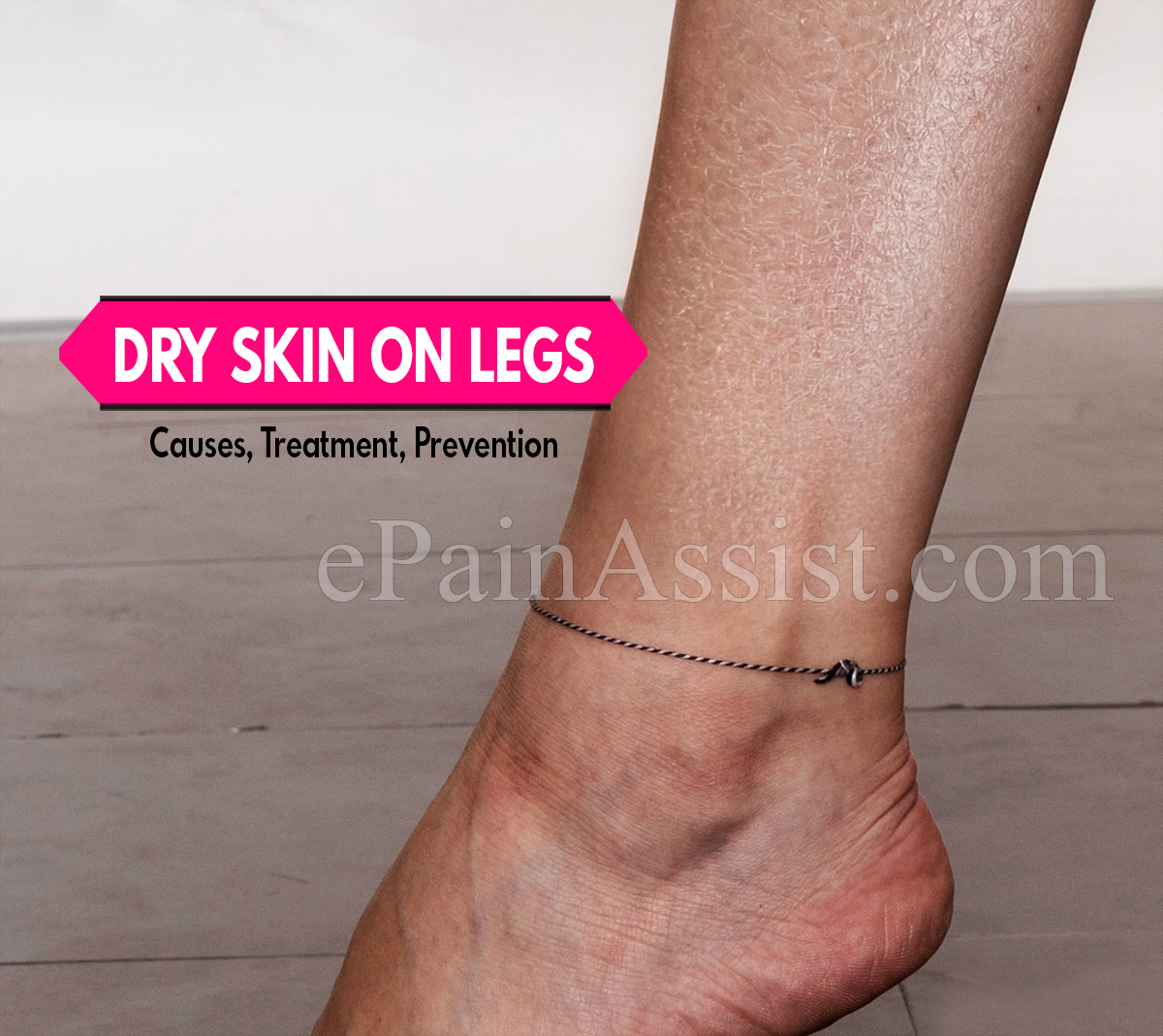Dry skin can be not only irritating, but also causes lot of itching and can make you scratch yourself like crazy. Anyone can have dry skin and in some cases it can come and go depending on the season too. There are many causes for dry skin of legs, such as illness, weather changes, allergy to something etc. If you are suffering from dry skin on legs, then there are lot of ways to find relief and soothe the dry skin by using moisturizers/lotions, making lifestyle modifications and medical treatment if needed.

How Do You Know You Suffer From Dry Skin On Legs?(1,2)
Symptoms for having dry skin on the legs vary and depend on its cause. Some of the common symptoms, which one experiences when suffering from dry skin on legs are: Redness, itching, peeling, flaky skin, cracked skin, fine lines on the skin, grey appearance of skin, skin feels tight after bathing and crusty or bleeding sores in some cases.
What are the Causes of Dry Skin on Legs? (2)
Dryness of the skin occurs when the skin is not able to retain moisture in its top most layers or is not able to combat dryness with the help of natural oils produced by the body. Some of the common causes for having dry skin on the legs are:
Allergic Dermatitis (3): This is a condition which occurs when the skin comes into contact with something which triggers the immune system. It could be a new soap, body lotion, laundry detergent or pet dander etc.
Psoriasis (4): This is an autoimmune disease where the skin produces excess skin cells leading to accumulation of them resulting in scaly and itchy patches on the skin, which can bleed and crack. Psoriasis patches can be commonly seen on the knees.
Eczema (5): This is a skin condition, which is associated with genetics and is caused by triggering of the immune system. Eczema causes development of dryness, redness, itching and a rash on the skin. Eczema can develop anywhere in the body, but is often seen on legs.
Weather Changes (6): Winter season is which where many people experience dry skin, especially on the legs. Decreased humidity also causes the skin to become drier.
A study in 2016 has revealed that dry skin can develop as a result of the way the skin reacts upon exposure to cold weather. This study also analyzed the amount of time the skin took to get back to its normal temperature after exposure to cold and found a link with dry skin symptoms and increased recovery time.
Getting Older (7): As one ages, there is less production of oil by the skin, thus making it easier for it to get dry.
Harsh Products (8): Strong and abrasive skin cleansers and soaps can cause the skin to become dry, as they remove all the natural oil from the skin.
Medical Conditions (9): Dry skin on legs can occur as a result of some underlying medical condition such as: kidney disease, diabetes, liver disease, lymphoma, HIV, thyroid issues and Sjogren’s syndrome.
What is the Treatment for Dry Skin on Legs? (1)
Dry skin on legs is not a fatal condition and is a symptom of something else. One can easily overcome dry skin on legs by using some home remedies and making lifestyle changes. If the dry skin on legs is due to an allergic reaction from something, then simply washing your legs or not using that product can prevent the skin on the legs from getting dry.
If the cause of the dry skin on the legs is an underlying medical condition, such as psoriasis, eczema or Sjögren syndrome, then treatment for that medical condition will give relief from dry skin on legs.
Some of the medical treatments for dry skin on legs are: steroid creams, corticosteroids, light therapy, immune-suppressing medications, oral antihistamines and retinoids.
Dry Skin on Legs: What You Shouldn’t Do?
One should avoid the following to prevent dry skin on legs:
- Bathing/showering in extremely hot water.
- Fragrances in lotions, soaps or detergents.
- Bathing or showering more than once a day.
- Using products which have caused a previous allergic reaction on the skin.
- Harsh soaps and cleansers as they strip the skin of its natural oil.
Dry Skin on Legs: What You Should Do?
Using thick moisturizers or lotions loaded with certain ingredients; especially after bathing, helps in trapping the moisture in the skin and helps in preventing and soothing the dry skin on the legs.
Using products having one or more of these ingredients is highly recommended: hyaluronic acid, petroleum, glycolic acid, glycerin, colloidal oatmeal, ceramides, aquaporins, antioxidants, salicylic acid, plant butters and oils. Colloidal oatmeal is one ingredient which helps a lot in soothing the dry patches from eczema.
Prevention of Dry Skin on Legs
Along with moisturizing, there are some important dietary and lifestyle changes to be made to prevent the development of dry skin on the legs.
- Consume a diet which is rich in antioxidants.
- If the weather is cold and dry, using a humidifier helps in bringing the moisture back.
- Keep yourself hydrated and drink lots of water every day.
- Always wear sunscreen when stepping out in the sun.
Conclusion
Dry skin on the legs occurs due to a host of reasons, such as weather changes, allergy or chronic medical conditions. Whatever the cause of dry skin on legs, there are lot of ways to soothe the dry skin and its accompanying symptoms, such as itching, cracking and peeling of the skin.
Many a times, making lifestyle changes and using thick moisturizers does the trick to relieve the dry skin on legs. However, if the cause of dry skin of legs is an underlying medical condition, then the right treatment easily helps in alleviating the dry skin on legs.
- https://uihc.org/health-topics/winter-dry-skin
- https://www.ncbi.nlm.nih.gov/books/NBK565884/
- https://www.ncbi.nlm.nih.gov/books/NBK459230/
- https://www.ncbi.nlm.nih.gov/books/NBK448194/
- https://pubmed.ncbi.nlm.nih.gov/30855797/
- https://pubmed.ncbi.nlm.nih.gov/23438136/
- https://pubmed.ncbi.nlm.nih.gov/15492432/
- https://pubmed.ncbi.nlm.nih.gov/3608584/
